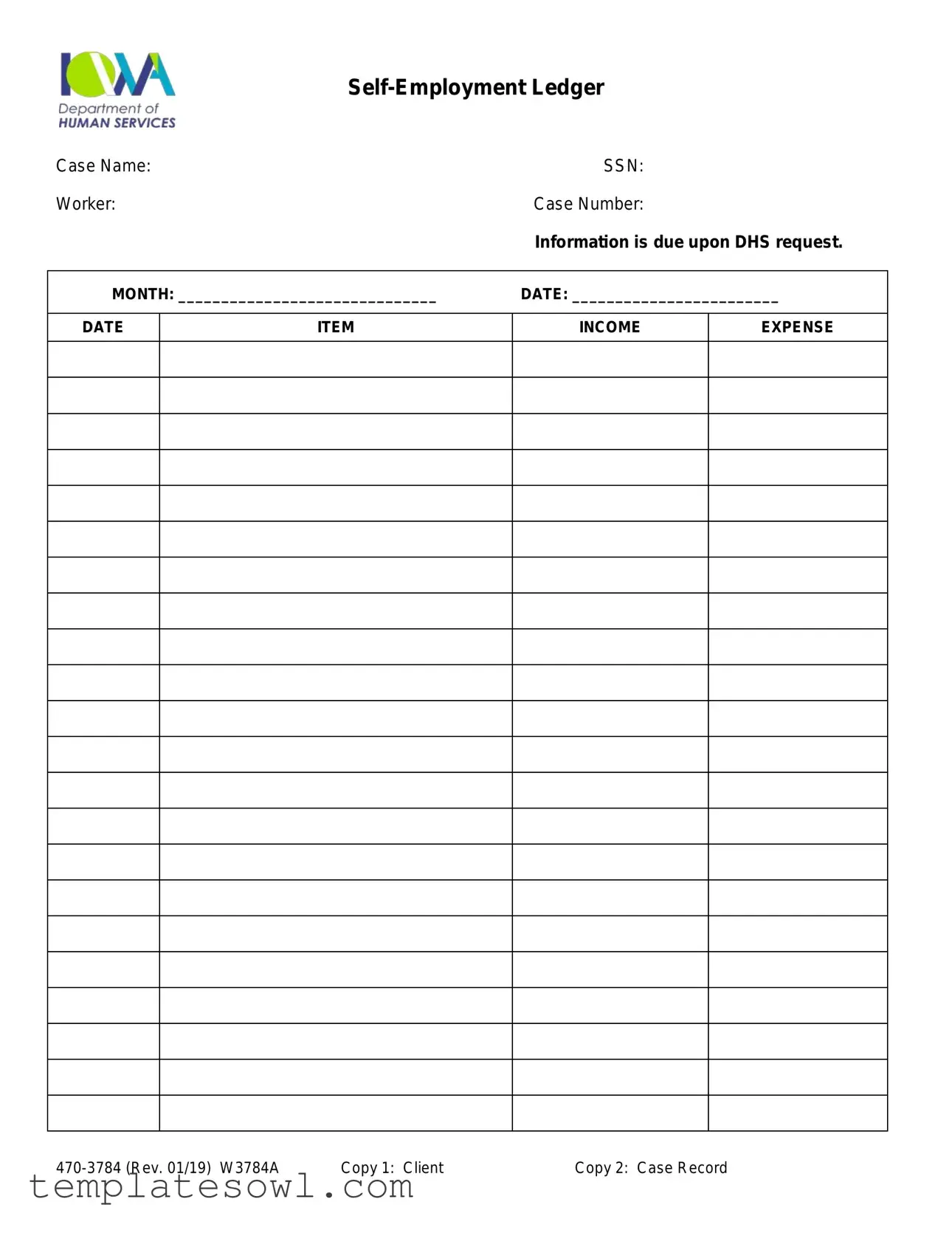What is the Self Employment Ledger form used for?
The Self Employment Ledger form is designed for individuals who earn income through self-employment. It helps you track your monthly income and expenses. This information is vital for the Iowa Department of Human Services (DHS), especially if you're receiving assistance or benefits. By providing a clear picture of your earnings and costs, you ensure that the department has the information it needs to evaluate your eligibility for services and support.
Who needs to fill out the Self Employment Ledger?
If you operate your own business or engage in freelance work, you should fill out the Self Employment Ledger. This form is especially important for those involved in programs overseen by DHS. Reporting your self-employment income accurately helps avoid issues with your benefits and ensures compliance with state requirements.
How do I fill out the Self Employment Ledger?
To complete the Self Employment Ledger form, start by entering your case name, Social Security Number (SSN), worker's name, and case number at the top. For each month, record the relevant date, your income, and your expenses. Make sure to keep your entries accurate and consistent. Remember, this form is a representation of your business finances, so clarity and precision are key.
When is the Self Employment Ledger due?
The Self Employment Ledger is due upon request from the Iowa Department of Human Services. Typically, you will need to submit this documentation during specific reviews or evaluations of your benefits. It’s important to keep an eye out for any notifications from DHS regarding when they require this information, ensuring that you remain compliant.
What happens if I don’t submit the Self Employment Ledger?
Failing to submit the Self Employment Ledger when requested can lead to complications with your case. It might result in delayed benefits or even discontinuation of your assistance. DHS needs this information to accurately assess your financial situation and adjust your benefits accordingly. Staying proactive and submitting your documents on time is essential to avoid unnecessary problems.

